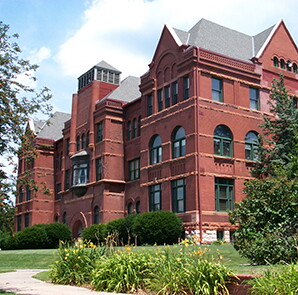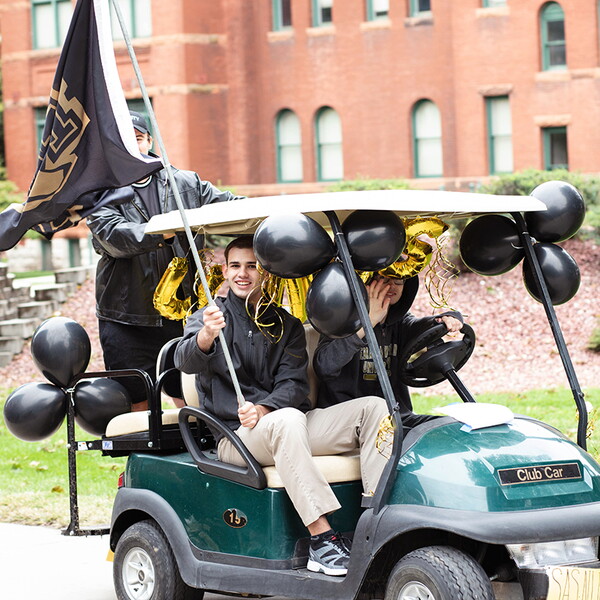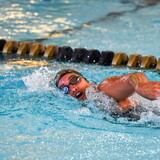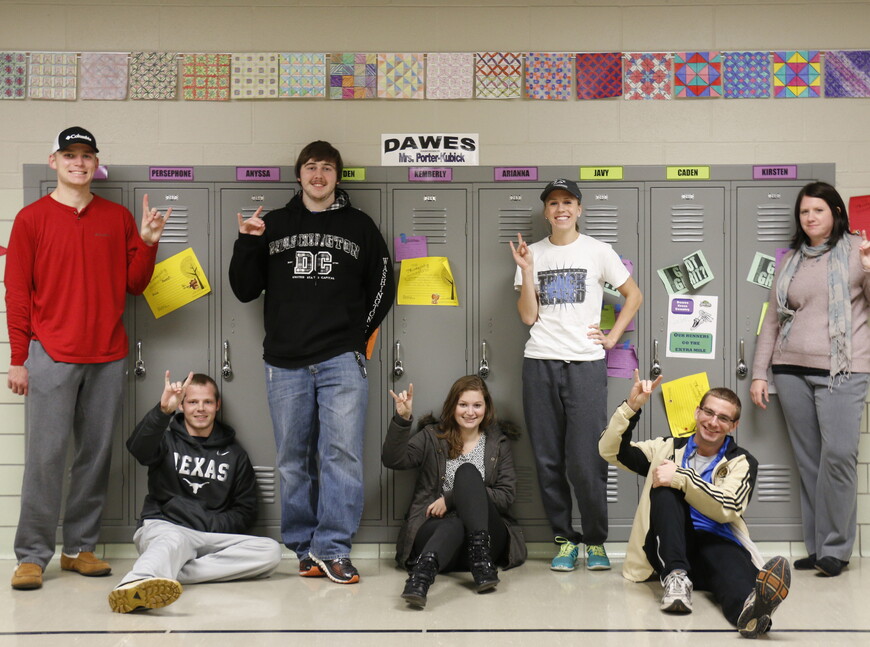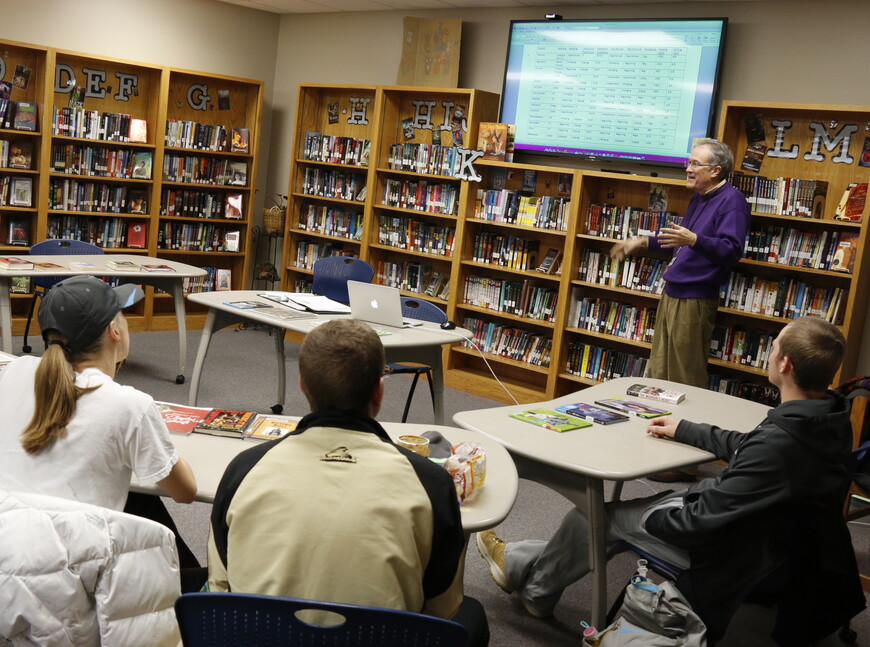Classes aren’t confined to four campus walls.
First-year biology classes, for example, use a “flipped classroom” that puts more emphasis on lab and less on traditional lectures.
James Perry takes a criminal justice class to the Lancaster County Corrections Facility to lead a book club with inmates.
Frank Ferraro taught his “Psychological Reactions to Nature” class about the benefits of unplugging and then took his students to the North Laramie River in Wyoming where they lived what they learned.
English professor Rick Cypert understands the benefits of getting students out of the traditional classroom. Cypert — who teaches courses in the university's Teacher Education Program — turned to a nearby middle school this fall in hopes of giving his future teachers some valuable experiences.
Students enrolled in “Young Adult Literature,” “Methods of Teaching English in Middle and Secondary School,” and “Methods of Teaching Reading and Writing for Middle and Secondary Schools Classes” attended their Nebraska Wesleyan classes at Dawes Middle School.
“Being in class until starting to student teach is not a great time to find out how is it to teach,” said Cypert. “It is not a good time to find out how school works. You need to find out how things work, how students learn and how teachers interact before you get to student teaching.”
Nebraska Wesleyan partners with Dawes Middle School on several endeavors, so moving his classes to Dawes made sense, said Cypert.
“The principal has been a big supporter of the program,” said Cypert, “so I have full access to the material and to the teachers.” Geographical proximity to NWU also played a role — the schools are a mile apart — as did the students’ diverse backgrounds.
Students in the “Methods of Teaching and Writing for Middle and Secondary Schools” met weekly in the middle school library. Students also benefitted from a practicum experience, completing a minimum of 20 hours with a content area teacher.
“They look at the class they’re observing and help the teacher with it, trying to detect through a series of papers the strengths and the challenges of these students in learning the material,” explained Cypert. “Then they think of a strategy to solve the problem and implement it. After the implementation of the strategy they evaluate its success.”
Nathaniel Heinz, a junior math and education major from Weeping Water, said the move to Dawes Middle School created a more relaxed atmosphere.
“Which helps the class as a whole feel more comfortable,” he said. “The environment was more open, which allowed everyone to feel like they can share their opinion more easily.”
Trevor Leiting, a junior math and education major from Gretna, appreciated access to middle school resources.
“Having thousands of middle school books at your disposal made meeting at Dawes much more useful than if we were to meet on campus. We can take the things we’re learning in class and apply it to the wide variety of books around us.”
Cypert said it’s criticial — especially for education majors — to connect theory and practice with greater emphasis on practice.
“You really know material when you teach it to someone else,” he said. “I think our Wesleyan students enhance the comprehension of what they are learning when they get to see it from another perspective.”
###
Story by Alessandro Schirano, Public Relations Intern

